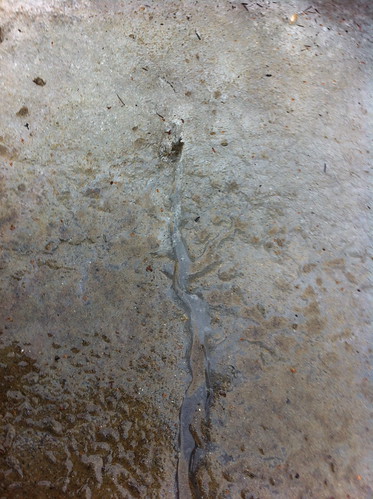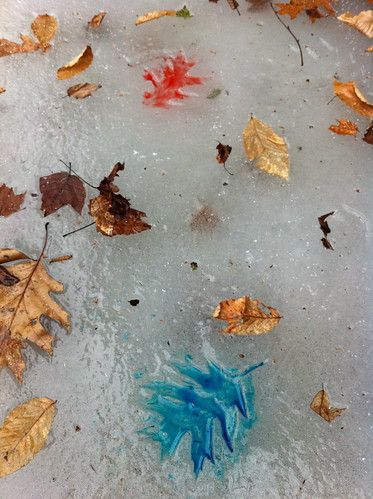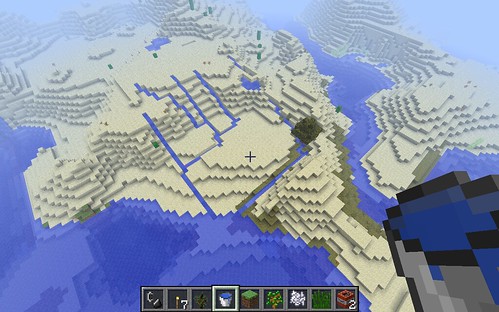With all the thaws we've been having this winter in Vermont, there's been a lot more water movement than we usually see in winter. While I'd rather have snow to play in, I've found some very neat things happening along waterways as liquid water, ice, and air interact. One of the neatest things about flowing water is that it works the same way on many scales - from that of a trickle through sand to that of the Earth's largest rivers.
While walking along the river during a thaw, I encountered a small trickle of water flowing into a hole in the ice. I'd found a tiny
moulin! "Real" moulins form on glaciers, when melting water pooling on their surface plunges straight down into a hole, right to the bottom of the glacier. Sometimes these plunge downward with such force they erode potholes in the ground underneath the glacier - a process that probably has influenced the terrain of Vermont as glaciers melted away during the end of the Ice Age(s).

My moulin was not nearly as impressive, as seen above (i should have remembered my food coloring!). In contrast, this photo below,
from NASA, shows a picture of a moulin in Greenland as viewed from above.
![]()



